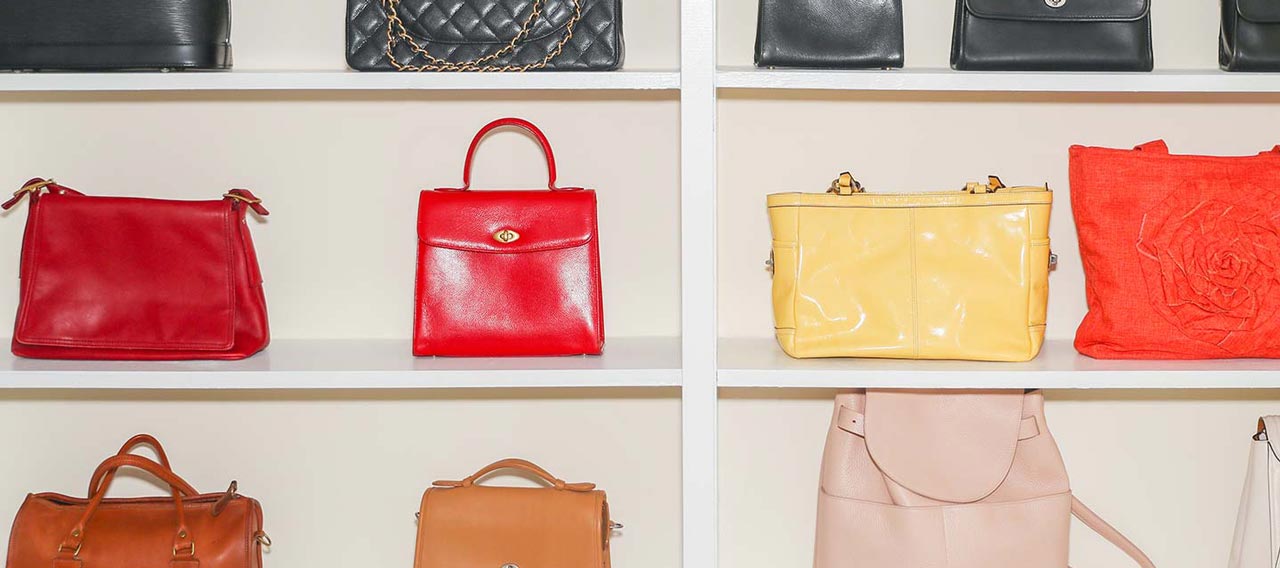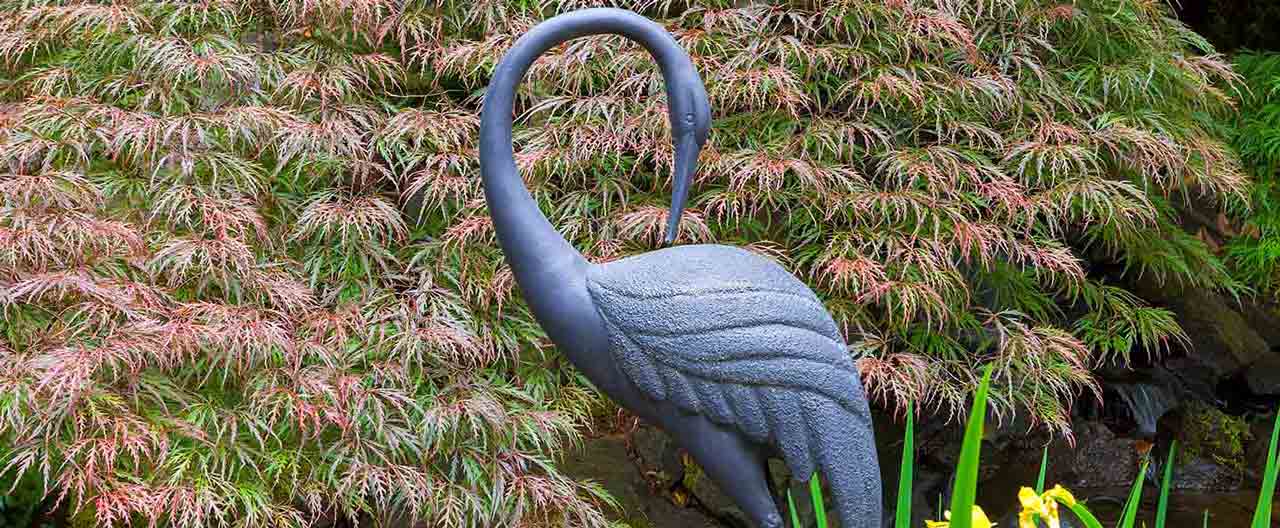A conversation between Chubb’s Maggie Reynolds, Senior Fine Art & Collections Specialist and Rosa Lowinger, Principal of RLA Conservation.
In private collections and on public display, outdoor sculpture provides a distinctive experience and a new type of curated space, creating the need for an appropriate and safe showcase environment. Although more conventional materials like stone and bronze have traditionally dominated sculpture gardens, collectors are now purchasing works made from a wide spectrum of substances including neon tubing, plastics, fiberglass, rubber, and electronic components. Whether you own outdoor sculpture made of traditional materials and more vulnerable modern materials, you’ll need to consider how to protect them from changing climate conditions, where to place them with surrounding structures, and how to include lifestyle, traffic patterns, and landscape topography in your outdoor design.
In a recent conversation with Rosa Lowinger, Principal of RLA Conservation, Chubb's Maggie Reynolds discussed six key steps outdoor sculpture owners can take to protect their assets from harm or loss. RLA has bicoastal offices serving the West Coast, Southwest, Southeast and Hawaii and is a part of Chubb's preferred vendor network.
Step 1: Schedule ongoing maintenance
Maggie:
To preserve the beauty and integrity of the works, caring for outdoor sculptures needs to be an ongoing process. Protective measures should include seasonal upkeep for changing weather and inspections by a conservator to see if the works require cleaning, waxing, or other maintenance. Rosa sees sculpture as a growing part of residential value with bespoke gardens showcasing works by artists like Plensa, Lalanne and Koons, along with traditional pool and fountain installations. Her view on maintenance is simple – it is a part of owning the piece.
Rosa:
You have a Maserati parked in the driveway and it gets washed and detailed once a week, but then you have a $1M sculpture that gets looked at maybe once a year. Car maintenance, house maintenance, and pool maintenance may be priorities, but outdoor sculptures should have scheduled maintenance with a specialist as well. Delicate finishes, patina, and paint can be damaged by a lack of care, and incorrect repair and corrosion can mean a loss in value. Also, location affects how many times a year you should have a sculpture looked at. Stainless steel pieces with salty coastal exposures in places like Malibu or Amagansett would do best with quarterly conservation at a minimum. And household staff can be trained for simple upkeep and awareness in between professional visits. My firm, in fact, often trains staff for clients.
Step 2: Be aware of water
Maggie:
Chlorine and fertilizer run-off from landscaping are not your friends! We tell our clients that works should be properly elevated to prevent water from pooling at the base, which can lead to corrosion of metal and paints, fissures in the stone or damage to electrical components. And, you’ll need to be aware of irrigation systems and spray spatters, as well as water from pools and fountains located near a sculpture.
Rosa:
You are usually better off having a piece on some kind of foundation, like a concrete pad, that is professionally installed. You should also pay close attention to where the sprinkler heads are located. I recommend situating them near the outdoor art, with the spray pointing away from the piece.
Step 3: Don’t mix art and weed whackers
Maggie:
Landscapers and irrigation specialists should be aware of the need to hand trim vegetation and redirect sprinklers to avoid damage to outdoor sculpture. They should also be instructed to advise the art collector immediately if there are any problems such as faulty water sprinklers or encroaching plants. A bed of mulch or other barrier around sculpture can be used to keep the sculpture clear of machinery as it is easy to damage a sculpture with debris which can kick up from a lawnmower.
Rosa:
Yes, this is what I refer to as a little bit of landscape adjustment – and a respectful conversation between conservator and a landscape company is often helpful. I recommend not landscaping right up next to a sculpture and being careful about other materials close to the artwork. You don’t want mulch near steel, as it holds moisture, and avoid gravel in hurricane-prone areas, which can cause damage to the surface of the pieces if kicked up in high winds.
Step 4: Keep an eye on trees
Maggie:
Give your art some breathing room. We recommend our clients consult a licensed arborist to ensure that nearby trees are healthy and to clear any overhanging branches which could potentially fall on outdoor sculpture. Fewer branches overhead also means fewer bird droppings, which should be cleaned off sculpture regularly to prevent damage.
Rosa:
Expanding further on this idea, if the sculpture is on grass, you do want to keep the tree branches from overhanging the sculpture, but having some trees located near the sculpture gives birds a place to perch, potentially protecting the work from nest building and bird droppings. You must be mindful of the droppings which can etch metal and staining stone over time.
Step 5: Secure the sculpture
Maggie:
Give your sculpture the best home by choosing a level location with proper grading on your property, taking into consideration the size, weight, material and movement of the particular piece. Structural surveys and base or support construction should be provided for proper drainage. Professional installers who are versed in weight distribution and seismic installation understand the vulnerabilities of sculpture and have the equipment needed to move and secure large and heavy outdoor objects.
Rosa:
It is also key to remember that with certain artists, like Alexander Calder or Robert Indiana, you have to work with their foundations for installation and conservation permissions.
Step 6: Consider the weather
Maggie:
Carefully consider the climate and conditions for your outdoor collection. Clients should consult with a conservator to confirm whether a sculpture can withstand the elements where they want it to be installed. If your sculpture is located in an area with exposure to hurricane force winds, you could consider installing a prefabricated impact-rated solution or use a non-abrasive protective wrapping. If extreme weather is possible, consider making plans for a professional shipper to move your sculpture to a secure location.
Rosa:
In truth, we see flaking paint from everyday exposure much more often than severe damage from a hurricane. And if a piece is already in place with environmental exposures, spot treatments and cleaning are a must. I have clients with sculptures by artists including Louise Nevelson and Mark di Suvero where they have had to do treatments twice a month due to an extremely volatile location.
Indoor/outdoor fabric like the line from Sunbrella can be used to safeguard your sculpture from flying debris, although you need to remember to remove it immediately after the storm.
Every sculpture is unique, and every location is unique. There are different exposures in the front of the house versus the back of the house, and each piece can require a separate solution. For example, say you have the same sculpture composed of shot-blasted stainless steel with a velvety mat finish in two slightly different locations. One sculpture is installed about 5 ft from the water’s edge exposed to spray from waves and boats. The other piece is about 30 feet from the water with a protective hedge. The one closer to the water may need monthly upkeep while the other will require work only twice a year.
Insights and expertise








This document is advisory in nature and is offered as a resource to be used together with your professional insurance advisors in maintaining a loss prevention program. It is an overview only, and is not intended as a substitute for consultation with your insurance broker, or for legal, engineering or other professional advice.
Chubb is the marketing name used to refer to subsidiaries of Chubb Limited providing insurance and related services. For a list of these subsidiaries, please visit our website at www.chubb.com. Insurance provided by ACE American Insurance Company and its U.S. based Chubb underwriting company affiliates. All products may not be available in all states. This communication contains product summaries only. Coverage is subject to the language of the policies as actually issued. Surplus lines insurance sold only through licensed surplus lines producers. Chubb, 202 Hall's Mill Road, Whitehouse Station, NJ 08889-1600.










